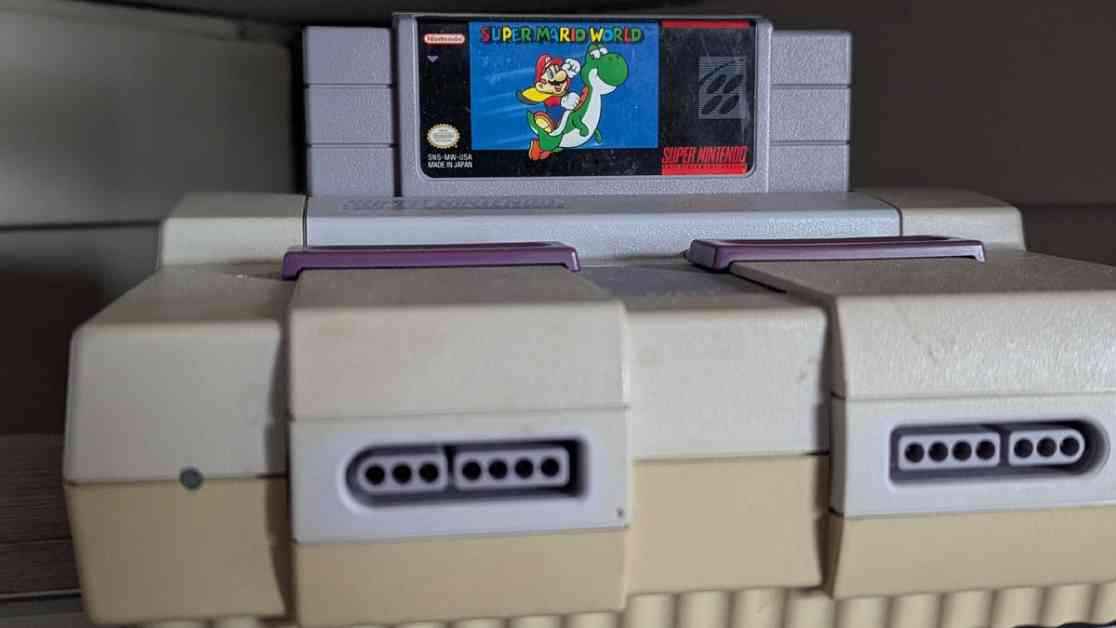Players Investigate: The Mystery of the Super Nintendo Running Faster
Most hardware tends to deteriorate and slow down as it ages. However, some old Super Nintendo systems seem to be defying this norm by actually running faster. While this change may not be immediately noticeable to the average player, dedicated fans have taken notice and are delving into the reasons behind this phenomenon. The increased speed has sparked curiosity among enthusiasts, particularly those involved in speedrunning classic games like Super Mario Kart and Super Metroid on original hardware.
The Unusual Phenomenon of Accelerating SNES Consoles
The mystery of the accelerated Super Nintendo consoles revolves around the 16-bit system’s 24.576 MHz APU (Audio Processing Unit) clock, which is dependent on a ceramic resonator. Surprisingly, as these consoles age, they appear to operate at a faster rate. A small group of players has taken it upon themselves to conduct experiments by testing old SNES consoles at varying temperatures, including extreme measures like placing them in the freezer, in an effort to collect data that could provide insights into this baffling occurrence.
Retro specialist Alan “dwangoAC” Cecil recently shared findings that shed light on the situation. Nintendo’s documentation indicates that the DSP sample rate should be 32,000 Hz. However, investigations dating back to 2007 revealed a rate of 32,040 Hz on existing hardware. Fast forward to 2025, and the average APU clock rate across several old consoles has increased to approximately 32,076 Hz, with the fastest ones reaching an impressive 32,182 Hz. This increase in clock rate has implications for the audio output of the SNES, potentially resulting in slightly accelerated music playback and higher-pitched audio.
The Impact on Gameplay and Speedrunning
While the accelerated APU clock may have subtle effects on audio, its impact on gameplay remains minimal. The most significant difference may be observed during loading screens, where room-to-room transitions in games like Super Metroid could occur slightly faster due to the accelerated loading of audio data by the APU. Despite these nuances, the overall effect on speedrunning records and gameplay completion times is unlikely to be substantial.
Alan Cecil shared his perspective with 404 Media, expressing doubts about the significant time savings that could be achieved throughout an entire playthrough. The marginal gains in speed are unlikely to amount to even a single frame in the context of speedrunning. However, as the APU clock rates continue to rise, there is potential for a more noticeable impact, particularly for tool-assisted speedrun bots. These bots are utilized by fans to analyze optimal routes for completing old games and to push the boundaries of what is achievable within game mechanics when human limitations are eliminated.
Looking Ahead: Future Possibilities and Speculations
As the APU clock rates of aging SNES consoles continue to increase, it prompts speculation about what the future may hold for these iconic gaming systems. The ongoing escalation of clock rates could lead to tangible differences in gameplay, especially for advanced speedrunning techniques and strategies. The evolving capabilities of these consoles, coupled with the dedication of fans exploring their boundaries, suggest that the realm of retro gaming may hold surprises yet to be discovered.
In conclusion, the mystery of why some Super Nintendo consoles are running faster offers a fascinating glimpse into the intricate workings of classic gaming hardware. While the implications for gameplay may be subtle at present, the ongoing investigations and discoveries by passionate fans hint at a future where these aging consoles may continue to defy expectations and reveal new possibilities. As the clock ticks on, the allure of uncovering the secrets behind these accelerated SNES systems only grows stronger, captivating the hearts of gamers and enthusiasts alike.

